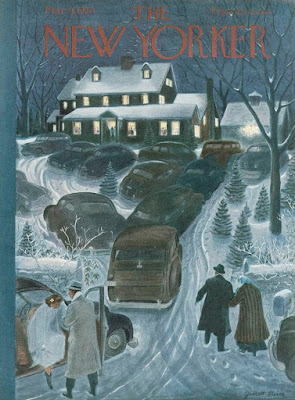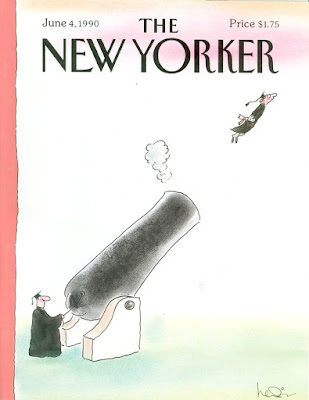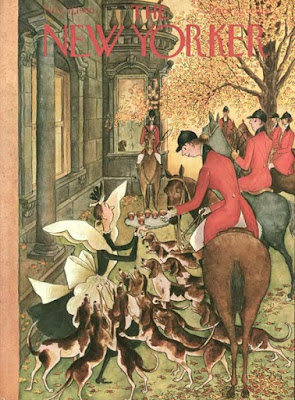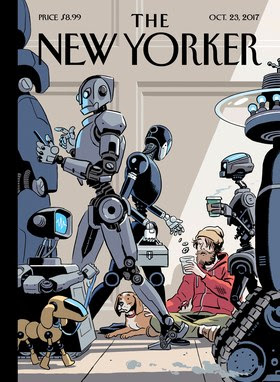“Understanding the cultural context of a text adds to our enjoyment of a good narrative.”
In the light of the above statement write an essay comparing the cultural contexts of the texts you have studied in your comparative course. Support the comparisons you make by reference to the texts.
This essay has an excellent tone: it addresses cultural norms in a personal way. The question asks about the reader’s enjoyment, so it’s great to gently express your views like the author did. Another author did it here, but it went awry because the question didn’t ask for your judgement of the cultural context. The author fleetingly discusses how the role of religion and gender has changed citing excellent examples from the texts. If you don’t understand what cultural context is, read this and it will make sense.
Perhaps the series below will explain cultural context to you better than anything else. Watch the change. The thing that’s changing – is cultural context.
1950s: servants, mobbed by dogs. Hunting that hurts foxes. A frank class-divide.

1950s: Christmas involves huge family gatherings. It’s uncommon to have a huge family now.

1990s: It was believed that education will shoot you into the stratosphere. The many unemployed graduates of 2010s would beg to differ.
1990s: People began to be concerned about pollution. It’s still there, it’s probably worse, but it doesn’t dominate the newspapers.
2017: we worry that artificial intelligence will enslave us. It’s not that AI didn’t exist in the 1990s, but it wasn’t mentioned in every publication.
2017: cats, Bali, selfies. You know better than I do. Note that they had cats, Bali and photographs in the 1950s also, but it just wasn’t the thing on everyone’s mind and thus not a part of the cultural context.
On the slightly less bright side, this essay is too long at 2200 words. 1500 words is probably the max anyone can hope to fit in on the day of the exam. See more details on timing/volume here. Look for things that I’ve cut out: they are all repetitive and redundant. The essay is better without them. You could cut much more out. The author overuses “for example”. It’s clear that you will be giving examples, so you don’t need to call in the heralds every time.
Cultural context can be broadly defined as the world of the texts and the forces within these worlds that shape the lives of the text’s characters. This automatically leads to the question of whether the reader could envisage living in the world of the text. The cultural context of a text can be conveyed through the type of society in which the text is set and also through the social background, rituals and norms represented within a text. In this essay I will examine in detail the following cultural context categories and decide whether there are similarities or differences between the culture through the headings of setting and society (everything falls under “society”, so it’s better to use more concrete terms), wealth and poverty and the role of men and women. The texts I have studied are “Juno” a coming of age film directed by Jason Reitman, “Foster” a novella by Claire Keegan and “The Plough and the Stars” a play by Sean O’Casey.
While at a glance, the setting of the three texts appears to be entirely different, there are noticeable similarities between the societies of two of the texts. The insular Irish society of “The Plough and the Stars” is mirrored in “Foster“. (Excellent!) The Plough and the Stars is set in 1916 in Dublin, Ireland. “The Plough and the Stars” was set during the time of the Easter Rising in Ireland, a time in which Irish citizens (this may not be technically correct, but it’s not an exam in law) fought for their independence from British rule. The people living during this time concerned themselves with the fight for independence and that alone without care for other world vents or other opposing ideas. Similarly in “Foster” which was set in 1981 in county Wexford, Ireland – you have to explain what the similarity is. The people living in Ireland at this time were hard workers who had a desire to constantly work. Although the characters in this novel were aware of what events went on around them, such as the IRA hunger strike and the poverty in Africa, these events seem to have not had any effect on their own world. They lived in extension to their own area leading me to believe they are an insular society.
Another similarity between the societies of these two texts is their religious backdrop. (This was originally merged with the paragraph above. However, it deals with religion, a distinct topic, so deserves to be on its own.) Both “Foster” and “The Plough and the Stars” show us views of a patriarchal society. Fosters opening scene The opening scene of “Foster” shows us how mass is a weekly ritual as the girl has just been to church with her father. We see how religion has the ability to mask reality. Those who attended mass and religious events were respected and deemed ‘holy’ despite reality. This can be seen when Dan, the girl’s father, who is a gambler, heavy drinker and abuses his family is seen as a respectable character due to his religious appearance which we the reader can see is a false front. Another influence of religion that we can see in “Foster” is the large family sizes regardless of the circumstance. For example, the young girl has been sent to live with a relative as her mother is pregnant yet again and her family cannot provide for her. This is as a result of religious influences as the church forbids contraceptive methods and therefore family planning was unthinkable at the time. Religion also played a major role in “The Plough and the Stars” as we can see each of the characters portraying religious ideas, for example, the continuous mention of heaven. However, Similarly to “Foster” religion offered a front for people to hide their true selves behind. Although the characters in “The Plough and the Stars” appear deeply religious and God-fearing (religious and God-fearing are like round and circular. You don’t need to use both, in fact if it’s a mistake.), they show little religious morals no signs of genuine moral integrity. An example of this is when Mrs. Gogan and Bessie Burgess take advantage of the war and killings to loot a local shop for their own benefit. In contrast to these religious ideals The Covey ridicules religion as he discusses the idea of evolution. These are greatly dissimilar to “Juno“. Here we see a modern liberal society. This is in contrast to the other two texts (the author already told us that it’s dissimilar in the previous sentence). The society in “Juno” is far from insular in fact it is the opposite. In “Juno” influences from the outside world are evident and the integration of other societies and cultures are evident from music tastes to the many racial backgrounds of Juno’s school peers. The characters in “Juno” are much more open-minded in comparison to the characters in the other two opposing texts. An example of this can be seen in Mac’s reaction to Juno’s pregnancy. He is open-minded and does not feel the need to be judgmental. Unlike the other two texts the theme of religion is not dealt with in “Juno“. From my recollection religion is not mentioned throughout the progression of the film. Religion does not have an influence of the modern day society of the film. An example of this is the options Juno is presented with when she finds herself pregnant. She can consider and has the option to abort the baby completely against the religious morals and ‘laws’ of the other texts. The similarities and differences of the setting and society of these texts and the intricate detailed ways in which they are presented engaged me as a reader and led me to think more into the influences of religion amongst other things on the lives of people today and in the past. This in depth study allowed me to decide I much prefer the independence todays liberal society offers in comparison to the boundaries past societies trapped their citizens in.
Another heading I would like to compare and contrast the three texts under is wealth and poverty. The impoverished Irish society is visible in both “Foster” and “The Plough and the Stars“. In both texts wealth offered the idea of prosperity whilst poverty offered a bleak outcome. Sadly poverty was seen as the norm in both texts. In “Foster” the girl’s family has little to no income, the family is impoverished and living in a neglected home. We can see the difference wealth can play on the quality of life of the characters of this text when the girl is fostered by the Kinsellas. The Kinsella’s home offers a great contrast to that of the young girl’s. We can see the girl’s shock at seeing a fridge and other amenities the house had to offer that she had never come in contact with before. The idea of wealth brought with it hope; hope for a better life, an education, a future. The contrast between wealth and poverty was easily noticed in everyday society. The girl’s family describe her as the rich English cousin. There is an evident class divide between rich and poor families. Similarly in “The Plough and the Stars” poverty is seen as the norm and wealth aspired to, e.g. the looting carried out by Bessie. The theme of poverty dominates through the course of the play from the descriptions of the destitute tenements to the harsh living conditions. The personification of the tenement in the opening scene immediately shows us that poverty is a theme that’s the effects of which progress with the progression of the play. We can see the impact of poverty on both the physical and mental wellbeing of the characters. The poverty has led to a lack in infrastructure, for example, in health care. This ultimately led to the death of young Mollser and Nora’s baby at the end of the play. Poverty also paid took an evident toll on Nora’s mental health as we see her having a mental breakdown during the course of the play. In relation to social class all the tenement dwellers are forced to be the same, however we do see Nora has ‘notions’ of ‘upperosities’ notions of upperosity (If you’re going to quote, don’t misquote). The only evident difference between the people is between the men and where the men rank in the army. Poverty limits the characters in both texts forcing them to be unable to prosper or to so much as consider the idea. On the other hand, in “Juno” we are presented with a contrasting situation. In “Juno” we do not see an evidently wealthy nor impoverished society instead, the audience is presented with a society in which everyone is presented with has equal opportunities regardless of financial backgrounds. We can see in “Juno” that wealth has the ability to buy material goods, but it does not buy happiness or your opportunities – that is for yourself to achieve and pursue. An example of this is how Mark and Vanessa’s wealth does not have the ability to buy them the one thing they (it’s not really they, it’s Vanessa) long for, a baby. In “Juno” the audience can see social class differences. For example, in the upper class we see Mark and Vanessa, highly educated successful people (Do you think Mark is successful by his own standards?), and Juno in the middle class. Through analysing the topic of poverty I have expanded my knowledge on what it was like to live in the past. This allowed me to truly appreciate the society I live in and the opportunities and facilities I have available to me.
Finally I would like to explore the three texts under the heading of the role of men and women. In “The Plough and the Stars” the men appear as foolish, selfish characters concerned only with the war (aren’t they doing it for Ireland? That’s something bigger than themselves.), drinking and their own priorities. All the men in this text occupy themselves with the idea of being a hero, putting fighting before the needs of their families, leaving the women at home to cook, clean and mind children. The men often become involved in brawls and arguments as a result of their own jealousy and immaturity. The men in “Foster” for the most part are of the same opinion. At the time men were seen to do all the real work to provide for their families. At night the men would go out together once again leaving the women at home. However, Mr. Kinsella is an exception to this stereotype. In the Kinsella household the work and parental duties is shared equally. “Juno” offers a varied different viewpoint on men in society. We can see that similarly to “The Plough and the Stars“: they can be immature, for example Mark possess childlike qualities, watching horror movies and believing one day he will become a rock star. Mark is also extremely indecisive. However, in opposition to this similarly to Mr. Kinsella unlike Mark and similar to Mr Kinsella in “Foster“, Mac, Juno’s dad is supportive of his daughter and is involved in all aspects of his family and believes he is equal to women.
In both “Foster“and “The Plough and the Stars“, women appear to be subordinate characters. (Why the paragraph break? The author examined each topic in just one paragraph, so it’s best to not break the mould.) This is evident in “Foster“. The place of women was seen to be in the home, cooking, cleaning and caring for children. This was seen as a social norm at the time. The girl’s mother is a clear example of this. The girl’s mother was expected to stay at home to do house work, cook, clean and mind the children (we know what stay at home means) whilst her husband was free to do anything he deemed acceptable which, in Dan’s case, was gambling, drinking and squandering the little money he had to provide for his family. Women are treated almost as a man’s slave to provide for him and to simply take part in anything he asked. An exception to this is also in the Kinsella’s home where they treated each other equally and with respect. In “The Plough and the Stars” we can see how although seen as less important, the women are the more sensible, level-headed characters. The women have realistic ideals (that’s an oxymoron. Maybe realistic expectations?) and strive to achieve them. For example, Nora is determined to have a better life for herself despite the obstacles in her path. Although treated poorly and subjected to suffering, women come out as the better sex in the play. In “Juno” women play an inspirational role. The younger girls look up to their elders. For example, although Juno would not like to admit it, she does look up to Brenda and respects her. Brenda is a pragmatic character. In “Juno” we see that opposing to unlike the other two texts women actually appear to hold more power than men. It is noticeable that females have the more prevailing roles, which is not stereotypical of the societies in the other texts. We see that the ultrasound technician, the Loring’s lawyer, Gerta Rauss, and the school secretary amongst many others are all independent, self-sufficient women. Overall this presents the audience with a noticeably feminist world. Amongst these headstrong independent women is Juno. The study of these three texts has lead me to the conclusion that today’s current society is a much more equal system that is fairer for all (equal and fair mean the same thing here, so use one) and helps to decrease the amount of gender inequalities in today’s world. (an equal system that decreases gender inequalities? More round circles.)
In conclusion, from my in depth study of the culture of the three texts I studied as part of my comparative course and its effects on the prosperity of its characters I believe it offers an engaging insight into the lives of the characters in both different times and settings in each individual text. The complexity of the cultural aspects and how they were cleverly presented to the reader added to my enjoyment of the text as it allowed me to extend my knowledge and broaden my awareness of life in the past in comparison to modern day.




